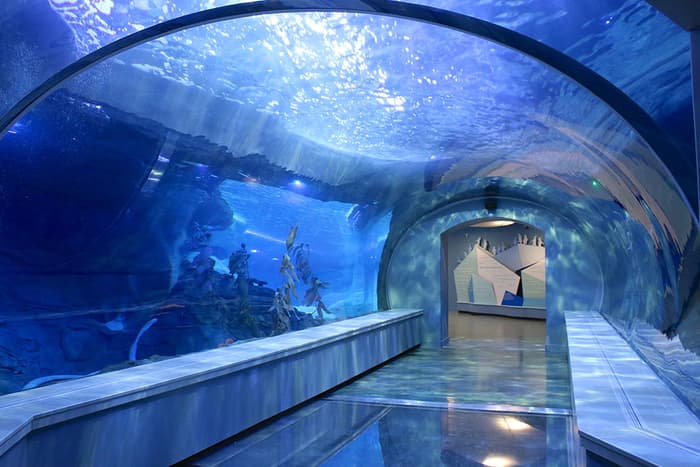Breaking Into the Field of Themed Entertainment Design Part 3: Education
Posted in Insights -

By Chris Roy, Director of Creative Design for OTL
In Part 1 of our series on starting a career in themed entertainment design, we explained how valuable it is to understand the critical part operations plays in this industry.
In Part 2, we discussed the seminal importance of design itself in this realm and the many roles that design encompasses.
In this blog, we’re going to tackle a key factor that can help you succeed in the field of themed entertainment design: education.
When considering college, you will naturally choose a university to attend based on your specific area of interest. For example, if you want to be an architect or landscape architect, which are licensed professions, you’ll be going to school for architecture or landscape architecture and will need to work in a licensed professional’s office for a period of years before qualifying for licensure.
Note that while there are architect’s offices that do a lot of work with themed projects, including theme parks, only a rare few are focused exclusively on themed projects. Also note that, while the large theme park companies such as Disney and NBCUniversal do employ architects directly, they are typically hiring architects that already have their licenses. Working for these companies before becoming licensed may not fulfill all the requirements necessary to get your license, so, more likely than not, if becoming a licensed architect/landscape architect is or develops into a goal, then you must put in your time at an architectural office first.
If your goal is to take the architecture or landscape architecture path and your interest is in themed entertainment design, the latter interest is what should guide your selection of a university. There are plenty of architecture schools/landscape architecture schools out there – there are far fewer that also have great programs for film, writing, theater, art, and/or video game design. If you go the architecture route, you’d be well served to minor in one of these areas.
If engineering is more interesting to you, the same goes for engineering schools. Mechanical, structural, electrical, and civil engineering are the most applicable to themed entertainment design and, if you choose an engineering path, ideally you’ll attend a university where you can minor in one of the areas listed above.
All that being said, you don’t have to go the licensure route. I didn’t, and I’d say the majority in the industry don’t. For example, I graduated from the Art Center College of Design in Pasadena, which is a very well-known design school with a large international student base. I majored in Environmental Design, which places a focus on designing the built environment, both indoors and out, and was on the entertainment track, which meant that alongside my courses in architecture and landscape architecture, I was also taking a heavy course load in film/entertainment design as well as product design and fine art (and, of course, the prerequisite academic courses, which I was able to skew heavily toward English and physics, with as little math as possible since I’m no mathematician and definitely not an engineer – though I have a firm grasp of general engineering principals).
 Note that by going this route and not attending an accredited architecture school, I did not give myself the opportunity to become a licensed architect in the future without going back to get an architecture degree. It would have been nice to have done this, but it hasn’t been an issue for my career. Whether or not to pursue this really depends on your personal objectives, and focusing the time and effort required may or may not help you attain your specific goals.
Note that by going this route and not attending an accredited architecture school, I did not give myself the opportunity to become a licensed architect in the future without going back to get an architecture degree. It would have been nice to have done this, but it hasn’t been an issue for my career. Whether or not to pursue this really depends on your personal objectives, and focusing the time and effort required may or may not help you attain your specific goals.
When it comes to design schools, a few I’d recommend in the US are ArtCenter, RISD, and Ringling School of Art & Design. In the UK, the Royal College of Art – School of Design has an excellent reputation, and this article also provides some great suggestions.
While the entertainment-related education options listed above all offer great routes into the industry, another option is game design. Personally, based on how I’m seeing the industry evolve, I think this is the most practical and most important area on which to focus. It’s where everything looks to be heading. Game design, architecture, and entertainment design are all merging, with visualization and design workflow based on game engines like Unreal Engine and Unity, both of which are supported by modeling in Cinema 4D, Blender, Houdini, and Revit (the latter of which is becoming the de facto standard for architecture).
Procedural Modeling (i.e., rules-based modeling), which is related to game design, is the future. I highly recommend focusing on this – particularly if you’re interested in computer science, AI, GAN’s, and synthetic media. A great example in this realm is the work of procedural artist Anastasia Opara; she created an AI system which she was able to train, in one example, to create new Russian-style windows based on a sample set of only five different archetypes, as seen here. While these are 2D images, others are already working on 3D versions of the same concept – and these examples are already a few years old!
 Game design offers a great blend of creative courses in storytelling and development, character development and design, environment design, and 3D modeling, procedural design, animation, and rendering. I think a perfect path to prepare for the future of theme park design – which will be a combination of physical/real environments and digital environments/augmented reality – would be to major in game design, then either minor in architecture (or landscape architecture) and/or computer science. And, if you’re interested in pursuing a master’s degree, I’d say go for an undergrad in game design and a masters in architecture/landscape architecture or computer science. That would set an amazing foundation for a theme designer and will set you apart from the competition, which is key. There are several colleges that are great for game design in the US, and a number of well-known universities focused on this subject in Europe.
Game design offers a great blend of creative courses in storytelling and development, character development and design, environment design, and 3D modeling, procedural design, animation, and rendering. I think a perfect path to prepare for the future of theme park design – which will be a combination of physical/real environments and digital environments/augmented reality – would be to major in game design, then either minor in architecture (or landscape architecture) and/or computer science. And, if you’re interested in pursuing a master’s degree, I’d say go for an undergrad in game design and a masters in architecture/landscape architecture or computer science. That would set an amazing foundation for a theme designer and will set you apart from the competition, which is key. There are several colleges that are great for game design in the US, and a number of well-known universities focused on this subject in Europe.
One more note on the topic of education: I highly recommend downloading and learning Blender, a free software that is very powerful and widely used. While there are a myriad of great YouTube tutorials and a legion of individuals teaching themselves, the tutorials from BlenderGuru are the standard springboard. No matter which path you take, learning Blender will be a useful tool in your educational arsenal for a career in themed entertainment design.
Stay tuned for the concluding part of this series, which will cover Engineering and Artisans, in an upcoming OTL newsletter.
Featured Articles
- Getting to Know OTL’s Administrative/Accounting Assistant Nathan Touche
- Centers With Well-Designed Experiential Water Features Can Attract 30,000 Visitors Per Week
- Fountains of Light: California Water Features Developer Opens North Texas Office
- AI and Facility Management: How to Avoid Potential Pitfalls
- Safety First and Last: Creating a Safe Site in any Environment